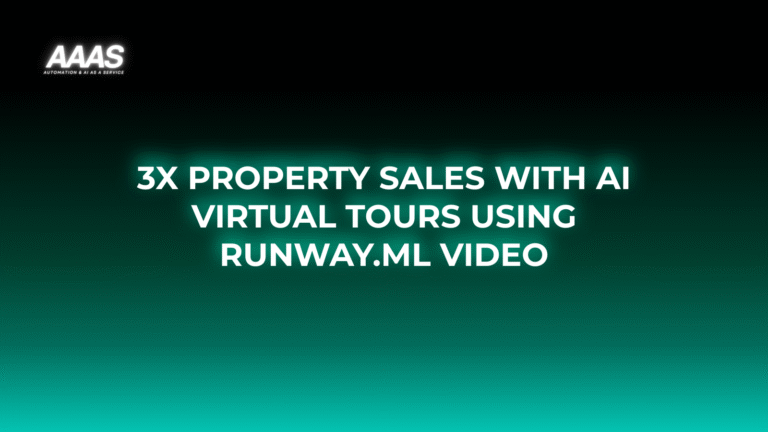Leveraging AI-Driven No-Code SaaS Platforms for Automated Workflow Integration
Market Problem: Inefficient Workflows

Traditional business operations rely on siloed applications, legacy systems, and manual processes. This leads to:
- Frequent human errors and data silos
- Duplicate work and inconsistent results
- Costly delays in scaling and adapting processes
- Limited agility, holding back innovation and growth
AI-Driven No-Code SaaS Platforms: Solution & Benefits

AI-powered no-code SaaS platforms enable businesses to automate workflows and integrate data across tools without developers. Featured solutions like Zapier, Make (Integromat), and n8n utilize AI to:
- Automate repetitive tasks—from lead capture to invoice processing
- Connect API-based apps instantly via drag-and-drop interfaces
- Trigger intelligent actions powered by machine learning (e.g., data validation, decision trees)
- Accelerate deployment from weeks to hours
- Significantly reduce operational costs
Real Business Use Cases
-
Sales and Marketing
Automate lead assignment, scoring, nurturing, and CRM updates across tools like Salesforce, HubSpot, and Gmail. AI models recommend the best follow-up actions, boosting conversion rates.
-
Finance
Invoice creation, expense tracking, and payables can be handled automatically with integrations between Xero, QuickBooks, and Slack—reducing errors and closing books faster.
-
HR
Accelerate onboarding and offboarding by connecting HR systems (Gusto, Workday) to IT ticketing and Slack. AI can analyze applicant data for better hiring decisions.
-
Customer Support
Automate ticket categorization, escalation, and knowledge base updates using AI models linked to Zendesk, Intercom, and email platforms.
Technical Details: How It Works

- Connect Apps: Users select cloud apps via pre-built connectors or API endpoints.
- Build Workflows: Drag-and-drop visual builders for configuring triggers, conditionals, filters, and time-based schedules.
- Apply AI Models: Leverage built-in AI (e.g., GPT for data extraction or ML for predictions) to analyze or route information.
- Testing & Deployment: Run dry-tests, monitor logs, and scale workflows elastically in the cloud.
- Security & Compliance: Major platforms offer encryption, SSO, and audit trails. Compliance features for GDPR, HIPAA, and SOC 2 may be available.
For developers: Most leading platforms also support custom code modules, webhooks, and advanced Python/JavaScript scripting.
Comparison with Alternatives
| Solution | Deployment Speed | Technical Skills Needed | AI Capabilities | Customization | TCO* |
|---|---|---|---|---|---|
| AI-driven No-Code SaaS | Hours–Days | None–Low | Built-in NLP, ML, Automation | Moderate–High | Low |
| Traditional Coding | Weeks–Months | High (Developers) | Custom models/AI | Very High | High |
| Standard SaaS (No AI, Limited Integration) | Days–Weeks | Low | None or limited | Low–Moderate | Medium |
*Total Cost of Ownership
For organizations seeking rapid deployment and scalable automation, AI-driven no-code SaaS is vastly superior for most SMB and mid-market scenarios.
Pricing Table: Leading AI No-Code Workflow Platforms
| Platform | Free Trial | Starter Plan | Business/Pro | Enterprise |
|---|---|---|---|---|
| Zapier | 14 days | $19.99/mo | $49–$69/mo | Custom |
| Make (Integromat) | Yes | $9/mo | $16–$29/mo | Custom |
| n8n | Yes | $20/mo | $50/mo | Custom |
All platforms offer flexible billing and usage-based pricing. Evaluate feature sets and AI automation capabilities for the best fit.
ROI-Focused Practical Examples
- Mid-size B2B SaaS Company: Automated 5,000 customer onboarding events/year, saving two FTEs (approx. $120,000/year) with a $1,500 annual platform cost—a 7,900% ROI.
- Retailer: Integrated POS inventory and marketing platforms, eliminating manual stock updates and increasing campaign conversion rates by 21% within 6 months.
- Consultancy: Reduced client data processing from days to real time, enabling 30% more projects with existing staff, profitably scaling without new hires.
Setup Steps
- Choose an AI-driven no-code SaaS platform that fits your tech stack and volume needs.
- Connect your business applications using pre-built or custom connectors (OAuth or API keys).
- Map process flows visually using the platform’s drag-and-drop editor.
- Configure AI modules for automation—e.g., email intent analysis, prediction, data validation.
- Set error handling, alerts, and exception management logic.
- Test workflows in sandbox mode, then deploy to production.
- Monitor real-time logs and analytics; optimize flows regularly.
Pros & Cons
| Pros | Cons |
|---|---|
|
|
Expert Tips
- Start with a well-mapped process before automating: automating broken processes compounds issues.
- Use platforms with clear AI explainability to ensure transparency in automated decisions.
- Regularly review integrations for changes in APIs or data formats to avoid workflow breaks.
- Combine analytics modules to quantify efficiency gains and demonstrate ROI to stakeholders.
- Establish data security reviews for any sensitive workflows—ensure compliance (GDPR, HIPAA) is maintained.
FAQ
What is an AI-driven no-code SaaS platform?
A cloud-based service that allows users to automate workflows and tasks across apps using AI-powered tools—all without writing code.
Do I need IT or programming skills?
No. Most platforms are built for business users with drag-and-drop interfaces and guided setup flows.
Is my data secure?
Leading platforms offer encryption in transit and at rest; ensure compliance certifications (SOC2, GDPR, HIPAA) are available where required.
Can I build custom workflows?
Yes, most platforms offer high customization, support for webhooks, and sometimes custom code modules for advanced needs.
How do I measure ROI?
Calculate saved hours, FTE cost reductions, and increased output vs. platform subscription costs. Built-in analytics help generate these reports.
References & Citations
-
McKinsey: The Promise and Challenge of No-Code Development
-
Gartner: Low-Code & No-Code Market Growth
-
Zapier: State of Business Automation Report
-
TechRepublic: AI Integration in Workflows
Last updated: 2025-08-21







